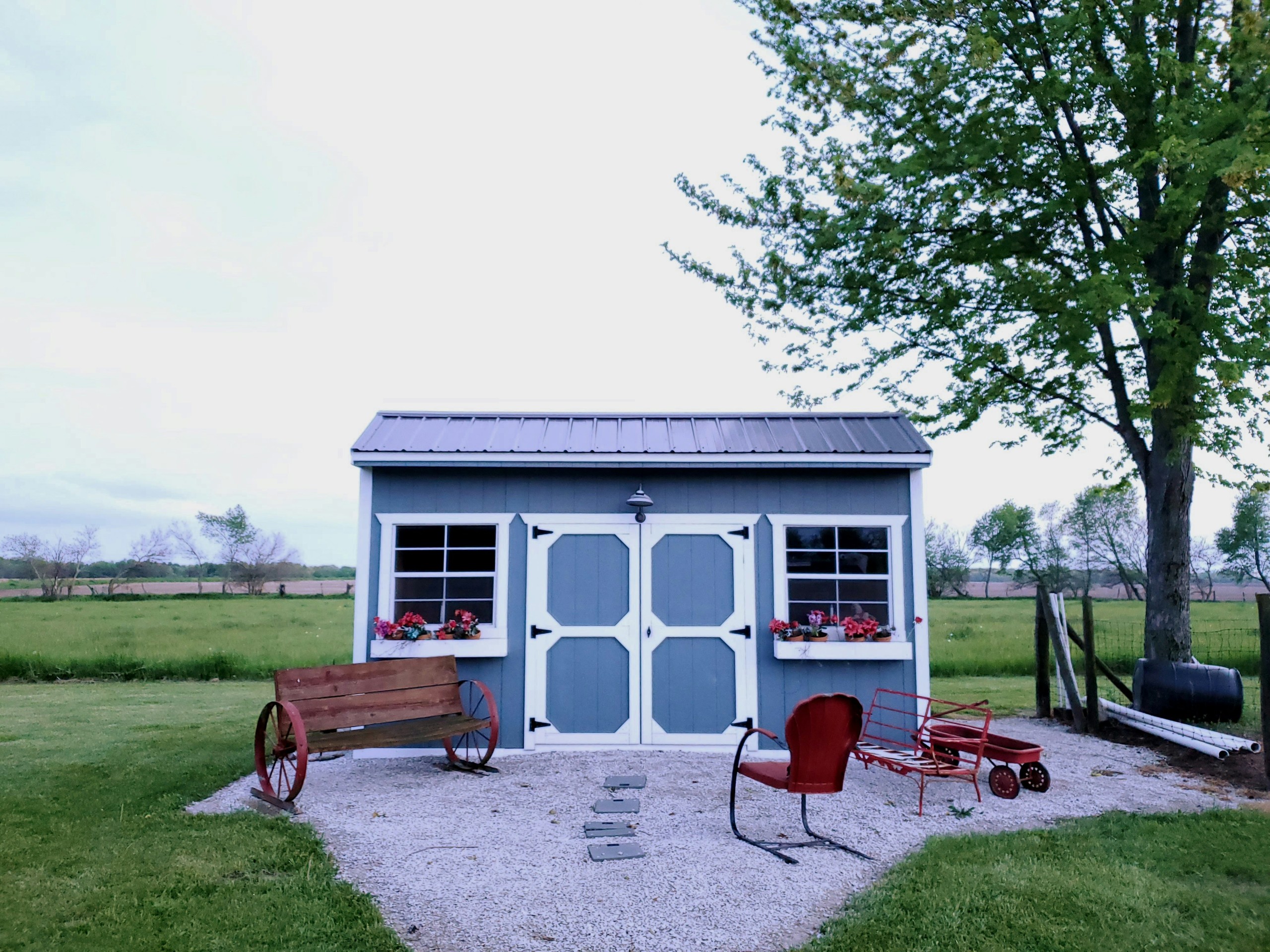Buying a Shed? First Define Its Purpose!
We showed our clients a beautiful home on acreage in the South Metro. It had everything. The only drawback? They could not decide what to do with the shed. Mind you, this was a 40×60 pole shed, with partial concrete floor, heat, 10 foot doors. A dream. Well, unless you have no idea what you will use it for.
I was actually a little jealous. I thought of how simple my life would be if I did not dream daily of what I would do if I had such a space. You may be the same. But if a person is not into cars, doesn’t have tools for a wood shop or metal shop, doesn’t collect extras, then really, the list of needs for a shed does get smaller. I know, I can’t fathom this existence either.
Let’s get back to the shed. Not a pole shed, just a standard 10×10, okay, just a standard 12×12. Who are we kidding, right?
Let’s start with the reason for the shed. Having a plan will accomplish two things: it will keep you focused on this shed with a purpose vs simply a black hole of junk accumulation. Second, it will help you determine how to design the interior of the shed. Is it a garden shed? Will you need shelving for pots? Wall space for rakes and tools? Or should you design the inside with bike hooks, racks for the paddle board, shelving on one side? If you decide on shelving on both sides, be sure to allow enough space down the center for easy maneuvering.
Is it for storage? What kind of storage? This is a fundamentally hard one for me to answer. As a Realtor, I see too many sellers try to clear out their homes after years of ‘storage’ at a home, shed, etc. But Shed Carefully! Are you doing this simply because you don’t have the heart to get rid of things you don’t use anymore? Are you doing this because you want to make room for a home office? In my experience, once the items accumulate in a space, they rarely find their way out of that space. Think hard about what needs to be stored.
Know the rules. Do you live in an area where the city, township, county or an association dictate what your shed can be? Some communities will allow you to own a shed but with a maximum square footage, 200 square feet for example. Anything over this may be allowed, but may require a building permit.
Where will you put the shed? Consider not just how you will access the items but WHEN. Is it a seasonal use? Will it store Christmas or Halloween decorations? Know that it could be a snowy or rainy or muddy walk to the shed depending on the weather and what season you’ll be accessing it. Avoid the proverbial parking your boat in front of your access to the snowblower. You only have to do it once before you plan better for the next season.
Finally, have long term shed goals. Today it may be ideal for your kids’ playhouse. In a few years, more ideal for their bikes. When they head off on their own, perhaps their belongings will be stored there for a short time. Eventually you may remodel the space to be your own getaway. Consider sheds with interior and exterior features that make this transition easy. “Most impressive shed use” goes to a client who redesigned their shed to match a poolside cabana they experienced one vacation. They would escape to this space in the winter and leave the snow and cold behind them, at least for a few hours.
Does a shed add value or help with selling your home? Well, that depends. If you let it fall into disrepair, not likely. If you design a concrete walkway to it, have landscaping carefully surrounding it, that is a different story. I can tell you that my buyers will usually ask enthusiastically “Does the shed come with the house?” regardless of its condition.
If you are not sure what you would use a shed for, you don’t need a shed. And what about our clients who did not see the need for theirs? We gave them homework over the weekend. “Ask your friends and family what THEY would use this 40×60 shed for.” You guessed it, they wrote an offer on the home first thing Monday morning.
By Kristin Beise, RE/MAX Advantage Plus


